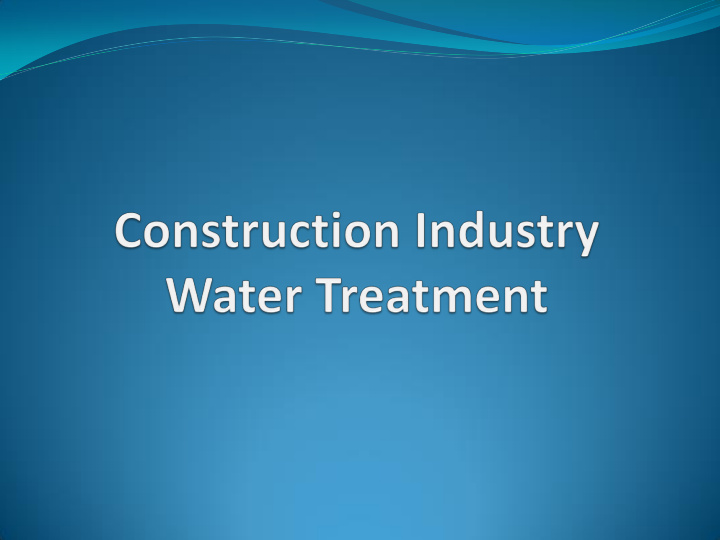



What do we need to consider? • Design • Installation • Cleaning methodology • Water Quality at Practical Completion
Design The system design should be reviewed to make sure that it allows good water quality to be achieved and maintained All necessary flushing facilities are present (bypasses, flushing connections, valve arrangements etc.) Dead legs should be avoided Pipework materials of installation Pressurisation units (flow through units, short connecting pipework)
Design Dosing pots (not automated dosing) Use of de-aerators Use of HEX units Water conservation in flushing Side stream filters The BMS needs to be considered to ensure that routine circulation through all previously wetted areas can be achieve
Installation Clean installation practices Wet pipework and plant as close to the start of flushing as possible Use treated water for pressure test Take appropriate precautions after pipework is wet Water treatment planning to be co-ordinated with installation plan
Pipework waiting to be installed
Pipework installed
Even when racked no caps fitted
Stored on site
Installation All points listed are common to both conventional and low effluent processes and are instrumental in the successful outcome of water treatment
Cleaning Methodology Conventional No/Low effluent Tried and tested Saves water and relies on filtration- but filters go to ‘land fill’ Will require significant water and Possible time saving/ labour drainage capacity reduction Is robust in approach Requires consideration at the time The long term prognosis is of design/installation understood Chemicals added to system stay there increasing TDS and presenting other challenges If it should fail it would be necessary to revert to conventional treatment
Use of Side Stream Filter as Flushing Aid
Water Treatment Flushing and cleaning should be undertaken in accordance with BG 29/2012 Dynamic flushing should be correctly undertaken Biocide washes should be employed as necessary Chemical cleaning should be carefully monitored Final dosing chemicals should be effective and selected with system metallurgy and components in mind Limitations of low flow devices when backflushing
Where low flow occurs 2 port valve, kv value 0.25 (open)
Water Quality Maintenance until PC Take first set of samples 7 days after final chemical dose. PCC samples Routine (daily) checks that completed systems are kept full and pressurised Routine (daily) checks that pumps are circulating and valves are in the correct position Control over any necessary drain downs and pipework alterations Fortnightly sampling to allow timely chemical additions as required
At PC the client should be provided with: Stable and maintainable water in closed systems Trend results as outlined in BSRIA 29/2012 (see next 2 slides)
The Site LTHW TVC @22˚C CFU/ml Date Geometric mean PC Guideline PCC Guideline Trend 105 100,000 10,000 01/02/2012 1 100,000 10,000 17/02/2012 1 100,000 10,000 Acceptable 01/03/2012 1 100,000 10,000 Acceptable 15/03/2012 Site - LTHW - 100000 10000 TVC Level 1000 Geometric mean 100 PC Guideline PCC Guideline 10 1 Date
The Site LTHW Secondary Pseudomonad @30˚C CFU/100 ml Date Geometric mean PC Guideline PCC Guideline Trend 412.13 10,000 1,000 01/02/2012 100 10,000 1,000 17/02/2012 Increasing trend and above PCC 2607.23 10,000 1,000 level 01/03/2012 100000 10,000 1,000 Unacceptable 15/03/2012 Site LTHW Secondary 100000.00 Pseudomonad Level 10000.00 1000.00 Geometric mean 100.00 PC Guideline 10.00 PCC Guideline 1.00 Date
Recommend
More recommend